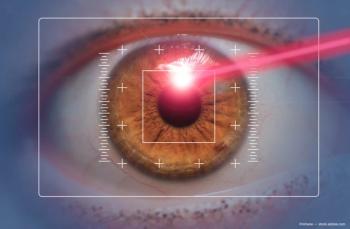
Prostaglandin analogs can be 'excellent' choice for NTG
Fort Lauderdale, FL—In a comparison of prostaglandin analogs in normal-tension glaucoma (NTG), bimatoprost 0.03% (Lumigan, Allergan) lowered IOP significantly more than latanoprost 0.005% (Xalatan, Pfizer Ophthalmics), although both medications significantly reduced IOP from baseline.
As compared with latanoprost, patients treated with bimatoprost had a significantly lower overall mean daily IOP reduction and a significantly greater reduction at 8 a.m. measurement, according to a report at the Association for Research in Vision and Ophthalmology annual meeting.
"I think this study would suggest that in the case of patients with normal-tension glaucoma, a prostaglandin analog is an excellent choice as a drug to try to lower IOP," said Robert D. Williams, MD, who is in private practice in Louisville, KY. "For most timepoints, there was not a significant difference between the two medications, the one exception being 8 a.m. when bimatoprost was statistically significantly better than latanoprost.
Patients with NTG have characteristic glaucomatous optic nerve cupping and visual field loss but have IOP in the normal range. The value of lowering IOP to reduce glaucoma progression was demonstrated by the Collaborative Normal-Tension Glaucoma (CNTG) study, Dr. Williams noted. The study compared untreated eyes with eyes treated to achieve a 30% IOP reduction and showed that lowering IOP had a favorable effect on the visual field and optic disc, despite the absence of abnormally elevated IOP at baseline (Am J Ophthalmol 1998;126:487-497).
"Before the CNTG, there was active debate in the glaucoma community as to whether treatment of normal-tension glaucoma is of any benefit," said Dr. Williams, who is also assistant professor of ophthalmology, University of Louisville. "It tends to be a very discouraging disease. Lowering pressure from already-low or normal pressure tends to be very difficult.
"The CNTG [study] was a watershed, demonstrating there is a pressure component to this disease, that it is not something that is uniformly dismal in its prognosis," he added.
Among ocular hypotensive medications currently used to treat glaucoma, the prostaglandin analogs have the greatest potency (Ann Pharmacother 2002;36: 504-511). Both bimatoprost and latanoprost have demonstrated effectiveness that is at least equivalent to that of timolol 0.5% (Surv Ophthalmol 2001;45[suppl 4]: S361-S368, Ophthalmology 2001;108:1023-1031).
Key study criteria Dr. Williams and colleagues compared bimatoprost and latanoprost in a randomized, double-blind, multicenter study conducted at six U.S. centers. The study involved patients who had NTG and were not using any ocular hypotensive medication at baseline.
Baseline IOP measurements were recorded at 8 a.m., 12 p.m., and 4 p.m. Eligibility criteria stipulated that the mean of the three measurements could be no greater than 20 mm Hg, that no single measurement could exceed 24 mm Hg, and that no more than one measurement could be 23 or 24 mm Hg.
Patients were randomly assigned to once-daily bimatoprost or once-daily latanoprost, and treatment continued for 3 months. Patients were instructed to instill one drop of medication daily at approximately 8 p.m. Follow-up visits were at 1 and 3 months, at which time an ophthalmic examination was performed, including biomicroscopy, ophthalmoscopy, and external exam. At the 3-month visit, a visual field examination was performed.
Newsletter
Don’t miss out—get Ophthalmology Times updates on the latest clinical advancements and expert interviews, straight to your inbox.
















































.png)


